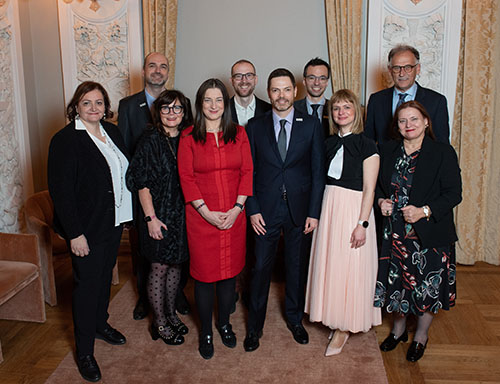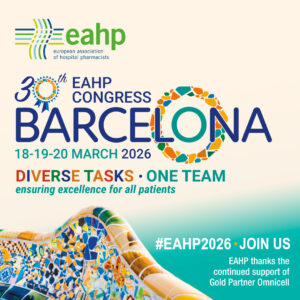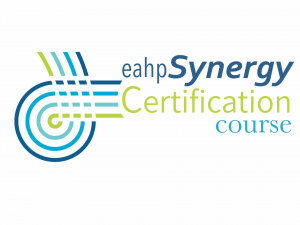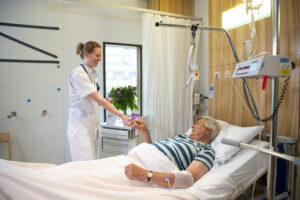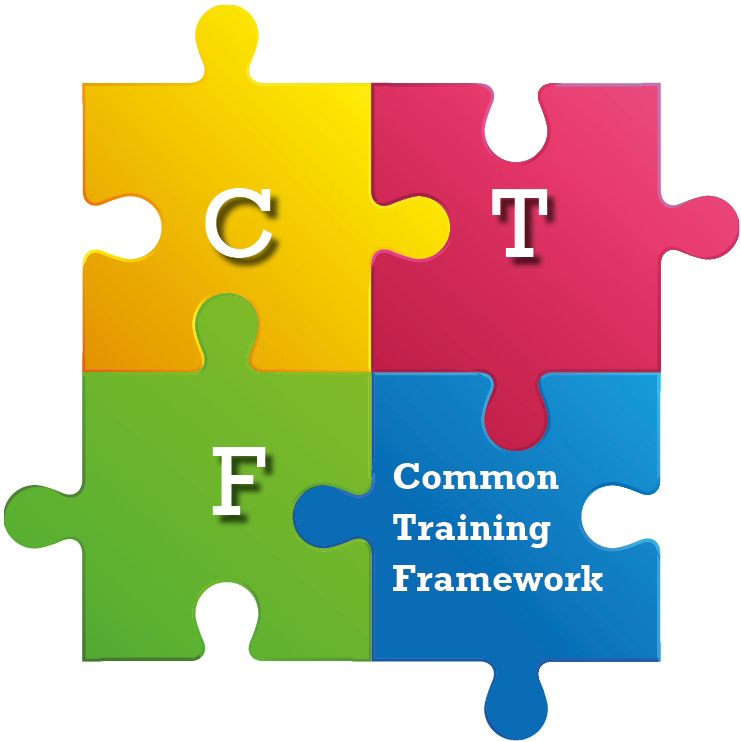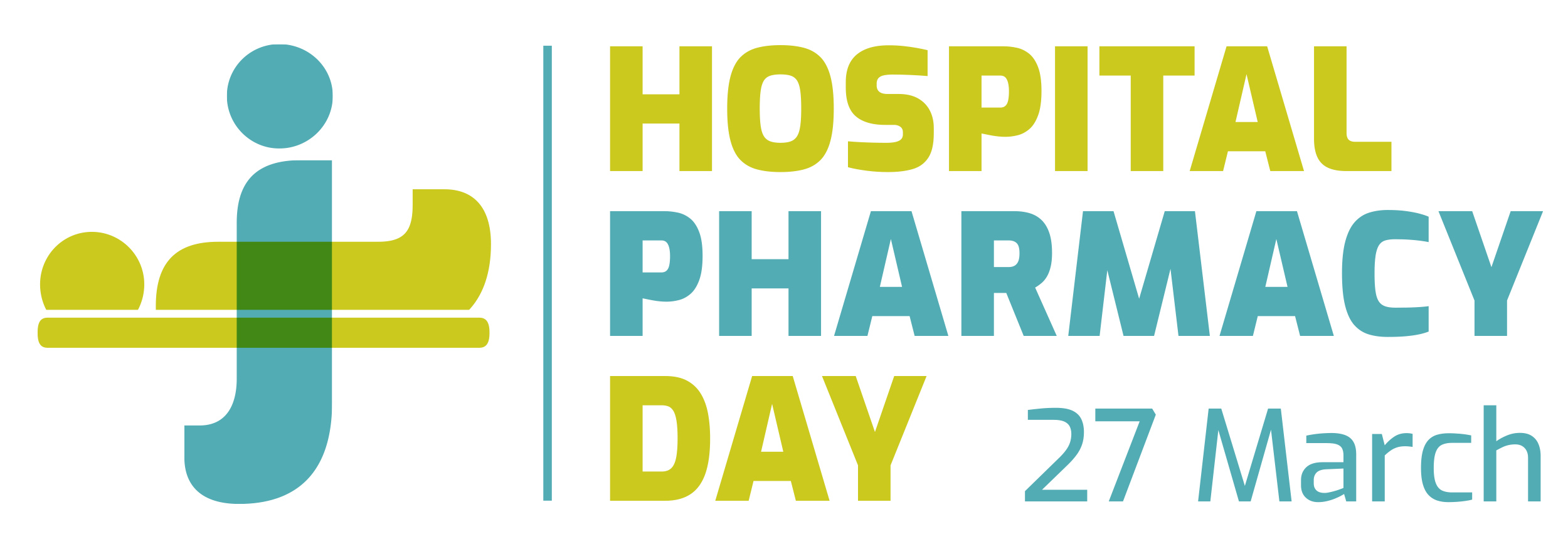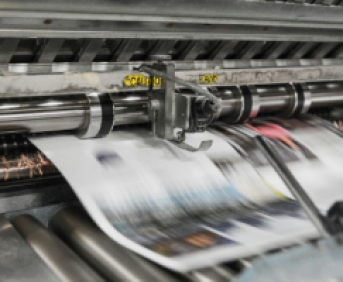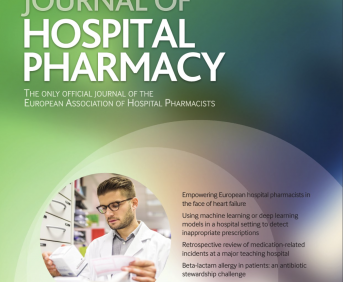Reconciliation of weekly methotrexate for non-oncologic use: results from a prospective cohort
Pdf

European Statement
Clinical Pharmacy Services
Author(s)
Adrian Viudez-Martinez, Ana Ramirez-Lopez, Javier Lopez-Nieto, Geronima Riera, Eduardo Climent-Grana
Why was it done?
Medication errors harm at least 1.5 million people every year. According to the Institute for Safe Medication Practice (ISMP), ongoing errors with oral methotrexate (MTX) for non-oncologic use suggest that more needs to be done to reduce the risk of patient harm, especially considering its potentially severe side effects.
What was done?
Identification and prevention of MTX-related medication errors for non-oncologic use by medication reconciliation at hospital admission. Analysis of errors’ type prevalence were also performed.
How was it done?
Design: prospective cohort performed in a tertiary hospital from September 2021 to April 2023.
Inclusion criteria: Inpatients with weekly methotrexate for non-oncologic use.
Intervention applied: medication reconciliation comparing inpatient’s e-prescription, clinical record, outpatient medication history and pharmacist-driven interview.
Data analysed: demographic data (age, sex, admission cause) treatment-related data (indication, methotrexate and folic acid posology, administration route, day of the week).
What has been achieved?
Out of 79 admission episodes (53.1 % men, median age: 72 years (range: 18-96 years), 63 (80% )were urgent.
Most patients had been prescribed methotrexate for rheumatoid arthritis (n=56), but also for polyarthritis (n=9), psoriatic arthritis (n=8), pulmonary sarcoidosis (n=2), pemphigus (n=1), spondylarthritis (n=1) and Still syndrome (n=1).
Methotrexate doses’ frequency were: 15 mg (28.9%), 10 mg (27.6%), 20 mg (11.9%), 7.5 mg (9.2%), 25 mg (7.9%), 12.5 mg (6.6%), 17.5 mg (5.3%) and 5 mg (2.6%).
Medication errors were identified and prevented in 38 out of the 77 episodes recorded (49.4%). There were classified as follows: dose (38.5%), day (17.9%), dose and day (17.9%), dose and administration route (10.3%), omission (10.3%), administration route (2.6%) and lack of indication (2.6%).
Folic acid doses’ frequency was: 10 mg the day after MTX (47%), 5 mg the day after MTX (28%), 5 mg daily except the same day as MTX (17%), 15 mg the day after MTX (8%).
Medication errors were identified and prevented in 51 out of the 77 episodes recorded (66.2%). There were classified as follows: omission (38.8%), day (33.3%), day and dose (16.7%), dose (9.3%) and drug (1.9%).
What next?
Performing medication reconciliation in every admission, measuring its potential benefits using validated tools for clinical pharmacists’ intervention assessment, such as the CLEO tool, which can, ultimately, serve as preamble to objectively measure the pharmacists’ impact in healthcare efficiency and patients’ safety.
The pharmaceutical approach to the processing of donor human milk in a human milk bank
Pdf

European Statement
Production and Compounding
Author(s)
Susana Fraga, Cláudia Cunha, Susana Pissarra , Carla Sampaio, Diana Silva, Pedro Soares, Teresa Soares, Renata Barbosa
Why was it done?
Human milk banks (HMBs) must use rigorous quality assurance practices to protect infants and milk processing, and post-pasteurization procedures are important in maintaining high-quality breast milk and safeguarding its quality.
The compounding pharmacist has all the knowledge and experience needed to implement processing circuits based on good handling practices and sterile technique, combined with quality assurance procedures to ensure their safety.
What was done?
Pharmacy implementation of the Donor Human Milk (DHM) processing circuit (by pasteurization) and conditions.
How was it done?
Bibliographical research and critical analysis of the functioning of HMB worldwide, with multidisciplinary meetings to define the best and most secure quality practices.
Equipment choice, in accordance with recommendations and assessment of their technical requirements.
Adaptation of the informatic medical integrated system to the DHM prescription, processing, quality control and dispensing circuit.
Design of the DHM circuit based on good practices for the safe use of products of human origin and on a robust quality assurance plan.
What has been achieved?
A DHM circuit was put into practice, with pharmacist intervention in DHM processing, quality control, and batch release.
Procedures for aseptic handling, quality control with check points and risk analysis, packaging, and labelling of DHM were outlined.
Work instructions were also established for handling equipment (pasteuriser, bottle sealer, laminar flow chamber) as well as procedures for cleaning facilities and material/equipment, with training sessions for the professionals involved.
The multidisciplinary circuit was adapted to the organisational management of the Neonatal Intensive Care Unit (NICU), HMB, and Pharmaceutical Services, certified on 18 April 2023 according to ISO 9001:2015 recommendations.
Guidelines for the correct use of equipment in accordance with its recommendations and technical requirements were established.
What next?
Opening more HMB worldwide is an inevitability. Prevailing know how at the level of hospital pharmacies represent several advantages to these projects, based on experience and expertise in manipulating biological products and maintaining a controlled circuit based on safety and quality standards.
Development of a hospital pharmacist led re-evaluation of medication errors
Pdf

European Statement
Patient Safety and Quality Assurance
Why was it done?
All errors, whether involving medication or not, are required to be reported and classified in the hospital reporting system. However, the system is poorly adapted for medication management and lacks the relevant terms. This results in the same type of error being classified in various ways, making systematic quality improvement difficult. A pilot study confirmed the system’s shortcomings, after which a new medication management process was developed and evaluated.
What was done?
The existing process for classifying medication errors was supplemented with a new process in which hospital pharmacists reclassified medication errors detected in the reporting system. The reclassification was based on a predefined medication management process.
How was it done?
A medication management process was developed in collaboration with specialist nurses and in accordance with applicable regulations and policies. The process consisted of the following activities: 1) Prescription, 2) Ordering/Delivery, 3) Storage/Narcotics Control, 4) Preparation, 5) Handover/Administration, 6) Medicines information in transitions of care, 7) Follow-up of treatment, and 8) Miscellaneous. The process was validated by having four hospital pharmacists independently classify 176 medication errors. Consistency in the assessment was evaluated, and the process was corrected as needed. All medication errors classified as medication-related in 2022 or containing the word “medication” in free text were thereafter exported from the reporting tool to Microsoft Excel and then into a data processing and performance monitoring tool for further analysis.
What has been achieved?
A total of 756 medication errors were identified in the reporting tool, distributed across 65 different activities. Hospital pharmacists identified an additional 305 errors through free-text searches that had not been reported as medication-related. A total of 1,061 medication errors (756+305) were reclassified and grouped into eight activities. The highest risk of errors was associated with the preparation (19%), followed by storage/narcotics control (18%), and prescription (17%). The new process, involving hospital pharmacists in classification, creates conditions for a more systematic approach to medication errors. The pilot project was presented at the hospital’s themed day for World Patient Safety Day 2022.
What next?
Discussions have been initiated with system developers to improve the reporting tool. Discussions with hospital management will be initiated with the goal of creating a structure in which hospital pharmacists have an active role in the hospital’s work on patient safety related to medication.
Flashpharma: a training tool to ensure quality medication management
Pdf

European Statement
Patient Safety and Quality Assurance
Author(s)
Samantha HUYNH, Catarina GONCALVES BARROSO, Sophie PATERNOTTE, Sofia DA SILVA MENDES, Claire JUDEL, Elvire MARTIN-LEMAIRE, Georges NICOLAOS, Chloé DUPONT, Nicolas CORNILLET
Why was it done?
Raising awareness and ongoing training of healthcare professionals is a crucial criterion for High Authority for Health certification. Flashpharma provides reliable information, particularly for night-shift nurses. This becomes critical in a context of reduced physician presence and absence of pharmacists, and the increasing presence of temporary nurses due to staffing shortages.
What was done?
The pharmacy department developed FlashPharma, an innovative training tool to enhance medication management within healthcare units. For instance, it contributes by promoting the proper use of high-risk medications (HRM) and risky medications (RM) by providing information to care teams as close to the patient as possible.
How was it done?
A working group created eleven sheets based on literature and adapted to the practices of adult hospitalization departments. Validated by medical experts and institutional committees, they include points to watch and key figures. They link up with our institutional protocols, our prescribing software and the points addressed by the visiting experts during the mock certification. Accessible by flashing QR codes strategically positioned or on our web platform, they serve as a basis for discussion with caregivers. Trainers included pharmacists, a pharmacy intern, and a hospital quality manager. Anonymous written questionnaires were used to gather feedback.
What has been achieved?
Two QR codes are placed on automated dispensing cabinets and mobile medical carts, linking to sheets on MHR, RM, and guidelines for proper drug crushing and administration via an enteral feeding tube. Another QR code on refrigerators provides information on drug storage and temperature alerts management. A label provides information on drugs prescribed outside the booklet, with six therapeutic equivalence tables validated by doctors.
Three sessions were attended by nurses, healthcare managers, orderlies, and doctors (n=18). Fifteen (83%) participants strongly agreed, and 3 (17%) agreed that they acquired new knowledge. All participants would recommend these sheets; 16 (89%) strongly expressed their willingness to participate in a second session.
What next?
Positive feedback highlighted the need for further education in various hospital units. Feedback on the use of QR codes by day and night teams will be sought during subsequent sessions and quantified using analytical dashboards. Appropriate continuing education initiatives will be implemented in paediatrics, intensive care and operating room departments.
«At the pharmacy, it is not just the cross that is green » Design and distribution of an awareness video on sustainable development related to the hospital pharmacy sector
Pdf

European Statement
Education and Research
Author(s)
Pascaline Hubot, Anais Lumen , Marion Lefebvre, Audrey Christiaens , Claudia Tavernier , Olivia Dalleur
Why was it done?
With the healthcare sector’s climate footprint accounting for 4.4% (2019) of global greenhouse gas emissions, sustainable development in healthcare is one of today’s challenges. It is important and urgent to highlight the simple actions that can be implemented to reduce these emissions and to promote them. The objectives were: (1) To identify eco-friendly practices related to the pharmacist’s work. (2) To design an animated video and (3) To raise awareness among pharmacy staff about sustainable development.
What was done?
Students in their final year of a complementary master’s degree in hospital pharmacy at the Université Catholique de Louvain (Belgium) decided to take on the challenge of producing an animated video on eco-actions specific to the profession of hospital pharmacist.
How was it done?
Firstly, a literature review (PubMed, Google Scholar) on sustainable development in healthcare followed by a focus group was carried out to identify and select ten eco-actions most relevant to the hospital pharmacist’s job. We provide at least one example for each sector of the pharmacy. Secondly, a brainstorming session was held to select the most appropriate communication tool.
What has been achieved?
An 8-minute animated video was produced using Powtoon software (January 2023 version). This video is available free of charge on Youtube (https://www.youtube.com/watch?v=5eKQVcVlP00). A poster was created for display in all hospital pharmacies in French-speaking Belgium to inform as many staff members as possible about best practices in sustainable development. A QR code was added to the poster to enable a direct access to the video. The project was presented by webinar for French-speaking Belgian hospital pharmacists in April 2023. This video is now included in the programme of a complementary Master’s degree in hospital pharmacy at the Université Catholique de Louvain.
What next?
In the face of climate challenges, raising awareness of sustainable development issues remains the watchword This educational video is a first step in initiating actions to make pharmacy more sustainable. It will be presented at the next annual meeting of French-speaking Belgian hospital pharmacists in 2024 and we hope that pharmacists will implement these concrete eco-friendly practices within their institutions.
« S’cape Pharm: Can you keep your cool? » Design and implementation of an educational escape game in Chirec’s distribution departments
Pdf

European Statement
Education and Research
Author(s)
Pascaline Hubot , Elise Francq, Guy Stichelbaut
Why was it done?
Hospital pharmacy is a constantly evolving field that requires ongoing training. New teaching strategies based on the gamification of educational objectives have been making headlines for several years. These include EG.
What was done?
An educational escape game (EG) has been designed and implemented for hospital pharmacists and pharmaceutical-technical assistants (Apth) working in one of Chirec’s distribution departments (Belgium). The objectives were : to provide continuing education and to improve various cross-disciplinary skills such as communication, team cohesion and critical thinking.
How was it done?
After considering the various constraints (dedicated time per session, number of players, etc.), a non-linear scenario was constructed. Distribution-specific themes were chosen for the creation of 12 enigmas, some in paper format and others in virtual format using Genially platform (November 2022 version). To ensure that the training sessions ran smoothly, hint envelopes containing the updated procedures were provided. Finally, the EG was pilot tested to get an idea of the game’s timing, to identify and correct any practical problems, and to adapt certain enigmas deemed too complex if necessary.
What has been achieved?
Nine sessions were held between December 2022 and September 2023. Each session included : briefing (5’), EG session (45’), debriefing (10’) and the distribution of an anonymous satisfaction survey at the end of the session (2’). Pharmacists (n = 24) and Apth (n = 15) respectively agreed (37.5% (n = 9) ; 66.7% (n = 10)) and strongly agreed (54.2 % (n = 13) ; 20% (n = 3)) that the EG improved their knowledge, and all participants found the EG to be a good teaching tool. Feedback was also very positive on cross-functional skills such as communication, team cohesion and critical thinking.
What next?
Futures sessions will be planned for newcomers to the pharmacy. Given the popularity of this educational tool and the suggestions for new topics, a new EG theme will certainly be on the agenda for 2024 pharmacy continuing education.
An algorithm for the process of selecting pharmaceutical companies in a pharmacy department
Pdf

European Statement
Clinical Pharmacy Services
Author(s)
Moisés Couñago-Fernández, Marisol Samartín-Ucha, Ana María Regueira-Arcay, Sonia González-Costas, María Alfonsín-Lara, Paula Prado-Montes, Iván Agra-Blanco, Elena Cerdeira-Regueira, Noemí Martínez-López de Castro
Why was it done?
When a new pharmaceutical product should be introduced in a hospital, a multitude of factors must be considered in order to choose a specific brand. A lack of uniformity in the criteria for the selection of new medicines has been detected. To avoid selection errors or arbitrary decisions, a selection structured algorithm was developed using quality tools according to management quality system ISO 9001-2015.
What was done?
To ensure that the process of selecting from several pharmaceutical companies fulfil the requirements of quality and lower cost, a decision-making process for these purchases was designed, through a structured method for the evaluation of new pharmaceutical products based on standardised evaluation criteria.
How was it done?
A multidisciplinary group was created focused on making decisions about criteria. All stakeholders were represented (management pharmacist, quality experts, management assistant and pharmacy director). Also, a survey was given to different specialist pharmacists to complete the criteria. Second, criteria were categorised according to their importance or potential impact in pharmacy practice or patient.
What has been achieved?
The algorithm took into account aspects related to: a)pharmaceutical company and b)aspects related to the pharmaceutical product. Each of these aspects is valued as a percentage.
a)Pharmaceutical company: 40% of the score was based on not having a repeated history of stock-outs, 45% on the evaluation of the provider according to an internal file based on incidences registered, and 15% if the provider was already a known supplier.
b)Pharmaceutical product: 50% was based on the cost of the medicine, 15% unit dose presentation (if applicable), 10% expiry conditions of the medicine, 5% allergens, 5% if it was presented in a pre-filled pen (if applicable), 5% if it could be stored at room temperature, 5% if the drug is supplied in diluted vials (in the case of parenteral medicines) and 5% if it had all the possible indications in the technical data sheet.
This methodology has been used successfully in recent months with the pharmaceutical supplier changes of abiraterone and sugammadex.
What next?
This tool will be used for all changes of medicine brands and new drugs purchased in the hospital, enabling uniformity in the purchasing process for all new drugs.
User satisfaction assessment in outpatient pharmaceutical consultations: results and future perspectives
Pdf

European Statement
Patient Safety and Quality Assurance
Author(s)
Eva Gomez-Costa, Purificacion Cid-Silva, Juan Luis Hurtado-Bouza, Laura Caeiro-Martinez , Pablo Feijoo-Vilanova, Andrea Luaces-Rodriguez, Sandra Rotea-Salvo, Alejandro Martinez-Pradeda , Maria Isabel Martin-Herranz
Why was it done?
The purpose is to identify deficiencies and improvement areas in the outpatient consultation area for evaluation and proposal of possible solutions.
What was done?
Implementation of an user satisfaction evaluation system for outpatient consultations at the Pharmacy Service of a tertiary-level hospital and initial results assessment.
How was it done?
The system was put into operation in January 2023 through a QR code placed in each consultation room and in the waiting areas accessible to all patients. The survey allows for differentiation between the different pharmacy service centers in the hospital, patient-caregiver patient category, age group, and whether it was the first consultation or an appointment for treatment continuation. Users can rate aspects related to information, waiting time from the appointment time to receiving attention, the professionalism of the staff, respect for privacy, pharmaceutical information about the treatment, and the facilities. This rating can be classified into: very good, good, bad, very bad, except for the waiting time: reasonable or excessive. Final question is an overall assessment of the service from 0 to 10. Survey allows for comments or suggestions.
What has been achieved?
A total of 86 surveys were conducted between January and September 2023. The majority were from users of the pharmacy service in the main building of the university hospital complex (82.6%). 10.6% were from first-time appointment and were mainly patients who answered (67.4%). Age groups: 65 years (12.8%). Regarding the evaluation, the results were: information about appointments, 51.8% very good; waiting time from the appointment time to receiving attention, 59.3% reasonable; professionalism of the staff, 59.3% very good; respect for privacy, 59.3% very good; pharmaceutical information about the treatment, 51.2% very good. The evaluation of facilities where pharmaceutical care is provided to the patient were: 33.7% bad and 9.3% very bad. The average score for the overall assessment was 6.7 points.
What next?
The evaluation of the information obtained from the surveys will serve as a basis for implementing corrective measures and possible improvements. The progressive increase in the number of survey will facilitate the detection of new issues and allow us to track changes in user satisfaction over time.
Use of an integrated research management system on a clinical trials unit of a Portuguese hospital
European Statement
Education and Research
Why was it done?
The evaluation of the use of the software was based on a retrospective analysis of all clinical trials introduced since 2020 and the interpretation of the results of a survey (carried out from July to August 2023) aimed at Clinical Research Associates (CRAs)
What was done?
Evaluation of the use of an Integrated Research Management System based on a retrospective analysis of all clinical trials introduced into the software since 2020.
How was it done?
The evaluation of the use of the software was based on a retrospective analysis of all clinical trials introduced since 2020 and the interpretation of the results of a survey (carried out from July to August 2023) aimed at Clinical Research Associates (CRAs)
What has been achieved?
With the introduction of an integrated management system as a registration platform of investigational product receipt, dispensing and return, were introduced into the software 204 clinical trials.
Since its implementation in 2020, the integrated system has been authorised by the sponsor as a registration platform in 55 clinical trials, corresponding to 79% of clinical trials initiated since that date.
The clinical trials Unit grants remote access to the clinical trials information to CRAs through the filling out of a declaration. Since the adoption of this system, remote access to the platform has been granted to 35 CRAs.
According to the survey distributed between July and August:
-85.7% of CRAs use the system in their monitoring work.
-The use of System has been exclusively approved to replace paper records in 88.9% of active clinical trials (with the exception of receipt confirmation via IWRS – Interactive Web Response System).
-All the CRAs who answered the questionnaire consider remote access to clinical trial data to be an advantage.
– 77.8% believe that by using the platform the time spent on presential visits has been reduced.
What next?
The use of this type of system is essential to ensure the efficiency of the tasks carried out by research teams. The approval of system by the sponsor allowed a significant reduction of paper records and the CRA’s remote access to the platform has allowed the early detection of errors, as well as a substantial reduction on time spent on presential visits. The CRA’s remote access to the movements associated with the experimental product like temperature records, calibration certificates, CVs (Curriculum Vitae) and GCP’s (Good Clinical Practices). Although use of the platform has been increasing, some sponsors still do not authorise the exclusive use of the system. It is therefore essential to share the platform’s added value in order to change the traditional ways of management of clinical trials information.
Empowering home hospitalisation with comprehensive pharmaceutical care: a model programme for medication management and patient monitoring
Pdf

European Statement
Clinical Pharmacy Services
Author(s)
Beatriz Somoza-Fernández, Vicente Escudero-Vilaplana, Cristina Ortega-Navarro, Ana de Lorenzo-Pinto, Ana Herranz-Alonso, María Sanjurjo-Sáez
Why was it done?
HH units have experienced an extraordinary period of growth over the past few years and are already considered the preferred option of care model for most patients. However, its full potential is actually limited by some challenges both demanding and ripe with opportunities for pharmacy engagement, such as patient clinical complexity (usually elderly and chronic patients at greater risk of poor adherence and suffering from medication errors) and lack of medical staff physically available for monitoring patients’ evolution.
What was done?
We developed and implemented a comprehensive pharmaceutical care programme in a home hospitalisation (HH) unit.
How was it done?
The project was conceived by a multidisciplinary team (physicians, pharmacists, and nurses) that conducted a literature review and developed a new home medication management standardised operating procedure. The team worked in the design of a HH pharmaceutical care guideline and the implementation of an e-health care tool for remote patient monitoring.
What has been achieved?
1. HH pharmaceutical care guideline: it included the directions for the following measures: (1) a comprehensive pharmaceutical assessment and medication reconciliation, (2) standardised recommendations for optimising acute and chronic treatments at home, (3) daily interviews with patients or caregivers to explain medication changes, and (4) follow-up calls 7 days after discharge in order to assess medication adherence.
2. HH monitoring app: this new tool ensures pharmacotherapeutic monitoring by setting medication schedules and intake notifications. The platform includes a patient recording for vital signs, side effects, medication intake, and health status (functional status and quality of life). The system enables online access for pharmacists and physicians in real-time and continuous two-way communication.
What next?
Since our programme is easily applicable to any HH unit, we are working on implementing it in other hospitals in our country, in order to overcome HH medication management complexity nationally. We aim to conduct a multicentre study to evaluate its external validity in terms of increasing medication errors detected and optimising hospital resources.
